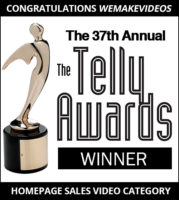Story as a means of conveying information is getting a lot of attention these days. But it isn’t a recent discovery. Since the days when tribes recorded tales of their hunting expeditions on cave walls, storytelling has been an integral part of human communication. Storytelling is hardwired into the human brain, so it’s no wonder brands and organizations create narrative content to reach their clients. But how did it get started?

The roots of brand storytelling can be traced back to a farming magazine started more than a hundred years ago. “The Furrow” is published by John Deere. From their earliest days as a print publication, they have leveraged corporate storytelling as a means of connecting with their market.
In the ensuing decades, iterations of corporate storytelling would work to fine tune the process. In the 1930s, Procter & Gamble, known then primarily for their detergents, were the first to sponsor radio serial dramas. The first “soap operas” were an early effort by a brand to connect itself with narratives they knew connected with their market.
From the 1940s to the 1960s, brands would continue to incorporate elements of narrative marketing to empathize with customers’ problems and core feelings.
In 1971, Coca-Cola changed the way we think about marketing with its groundbreaking “I Want to Buy the World a Coke” campaign. Following a decade of cultural upheaval, the story of a soft drink being the catalyst for bringing the world together was a song on everyone’s lips.
Toy companies in the 1980s flexed their storytelling muscles and distinguished themselves as masters of narrative marketing. Lego told stories of kids’ creations using their multi-colored bricks while Hasbro teamed up with Marvel comics and turned G.I. Joe into a cultural phenomenon.
In 2005, pre-dating the rise of YouTube, LiveVault’s “Institute for Backup Trauma” became one of the first viral videos on the internet. In a relatively short period, the video, starring John Cleese, generates over 250,000 downloads and thousands of sales leads. Traffic to the company website for the backup server provider saw an increase ten times from its regular flow of visitors.
Today, businesses and organizations are pouring resources into brand storytelling. Nearly 90% of all brands are utilizing some form of content marketing and spending millions of dollars to communicate their narrative. Some companies, such as Coca-Cola, are developing marketing plans featuring branded storytelling as central to all their marketing efforts.
At WMV, we know how important it is for you to tell your brand’s story. We’ve been helping clients unleash their brand’s potential through award-winning sales and marketing videos. The challenge for many of our clients is knowing just what story to tell.
Our team of dedicated and experienced professionals is here to help clarify the story you want to tell and bring it to life in ways you may never have imagined. You can check out our story by watching our demo reel HERE.
When you’re ready to get your brand’s story out there for your customers to hear, contact us and let us show you how we can help.


